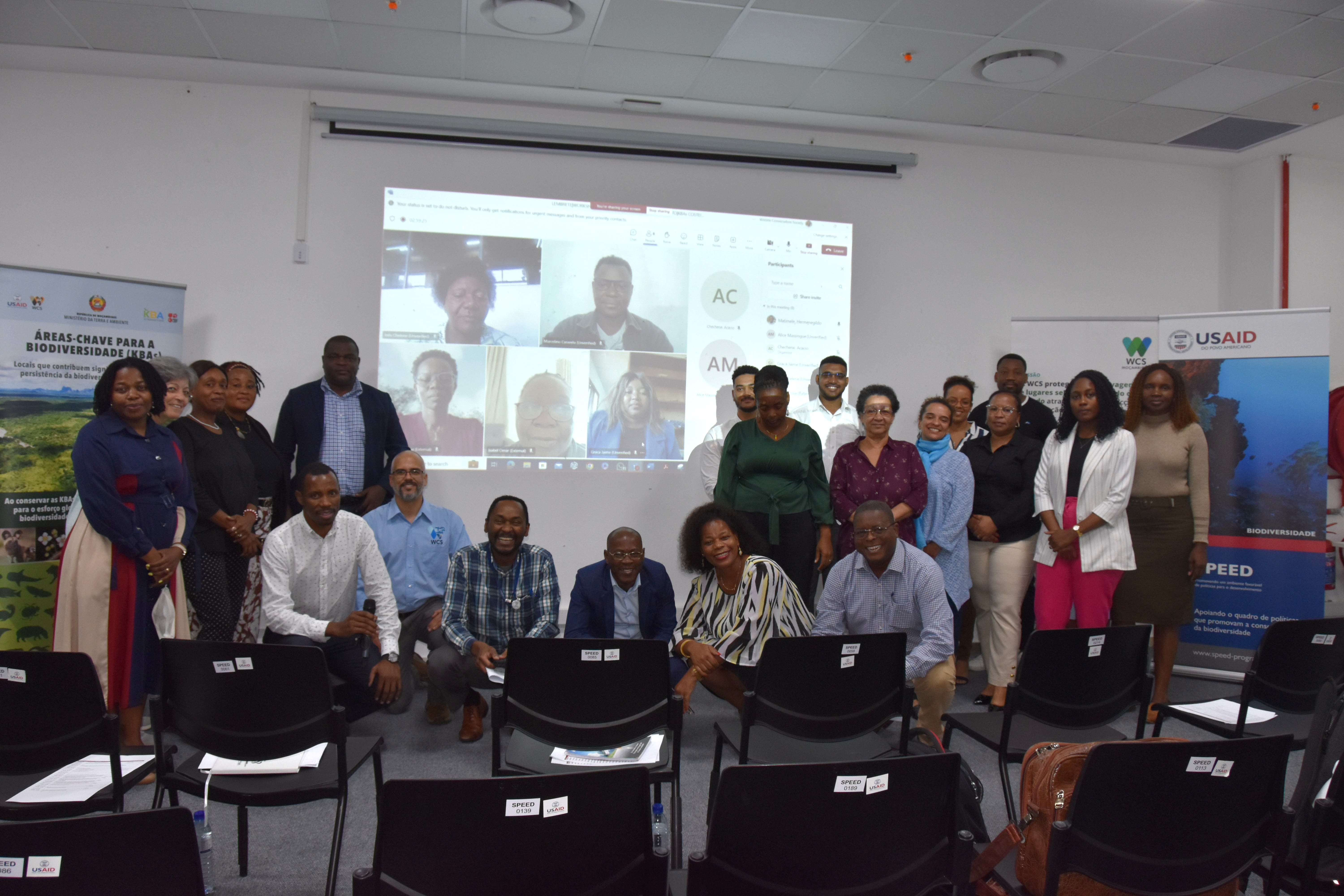The Ministry of Land and Environment (MTA) and its partners, namely the Wildlife Conservation Society (WCS) and USAID, through the SPEED Program, held a workshop on 21 May to present the results of the activities carried out in Mozambique over the implementation period of the KBAs project, which are places that contribute significantly to the persistence of biodiversity globally.
Hugo Costa, WCS Mozambique Program Marine Manager, explainign the results of the KBA project
This was a two-year project implemented by WCS Mozambique, in close collaboration with MTA, through the National Environment Directorate (DINAB). The project was funded by the United States Agency for International Development (USAID), through the SPEED Program. Among others, it aimed to conduct training on the application of the International Union for Conservation of Nature (IUCN) Red List criteria. Moreover, the project aimed at training members of the National Coordination Group of KBAs and RLs to apply, correctly, the global standard for the identification of KBAs; as well as identifying and mapping coastal and marine KBAs and disseminate their use for decision-making in the country.
Furthermore, the project aimed to assess the risk of extinction of species of fauna and flora based on the IUCN RL criteria and to apply the modelling approach to identify priority areas for the conservation of the coral reef ecosystem. Finally, a pilot study of blue carbon as a financing mechanism for the long-term sustainable management of KBAs and Marine Conservation Areas (ACMs) was conducted.

During this project, more than 100 people were trained on the IUCN Red List matters, the global standard of KBAs and the integration of KBAs in decision-making instruments at provincial level. The participants are from the provincial governments of Mozambique, lectures in academies and researchers of the country’s research institutions. Of these, approximately 50% (45 people) are women. In addition to training, the project assessed the risk of extinction of 30 plant species and prepared 5 new proposals for coastal and marine KBAs; identified 17 coral reefs hotspots. Through a pilot study, it was demonstrated that the generation of blue carbon credits in the study area is only feasible with REDD+ initiatives.
It should be noted that this project is the third phase of the initiatives implemented by WCS and MTA with the financial support of USAID through the SPEED program. The first phase, which took place from 2019 - 2021, identified 29 KBAs that were formally recognized by the MTA, through Decree 51/2021 of 19 July, where they are considered areas for the protection of avifauna and its habitats.
In the National Territorial Development Plan (PNDT) the KBAs are defined as an integral part of the national ecological structure and should therefore be considered areas to be avoided by development projects that compromise their conservation objectives. These areas are now available on the World Database of Key Biodiversity Areas and are also available in the Mozambique Biodiversity Information System (SIBMOZ), which it is the government’s official reference platform to host, integrate and centralize technical biodiversity information (documents, species lists and maps), policies, strategies, plans and other relevant information on biodiversity in Mozambique.